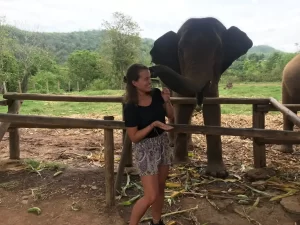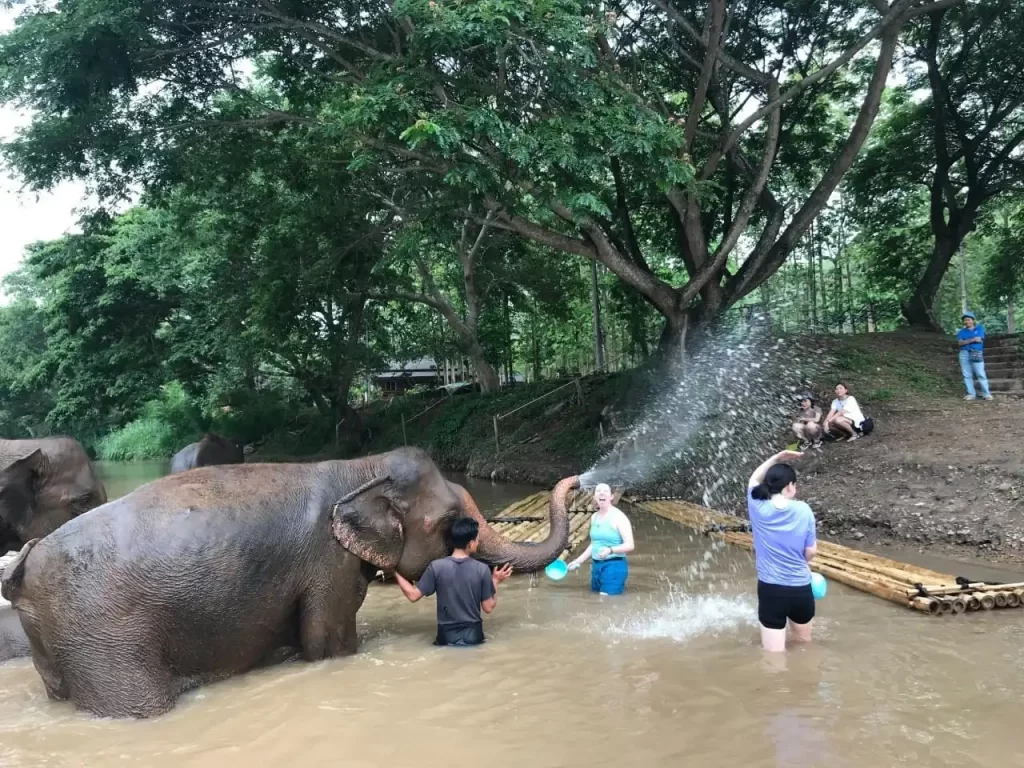How Elephants Communicate With Each Other
Spending time at our elephant sanctuary in Chiang Mai, Thailand, opens your eyes to how these majestic creatures communicate. Elephants are amazing creatures, known for their intelligence and social behavior. We see this every day at our sanctuary in Chiang Mai. They can communicate in various ways, including vocalizations, tactile signals, and body language. Understanding how elephants communicate with each other is essential in understanding their behavior and protecting them in Thailand’s wild and captive sanctuaries.
Vocalization is one of the primary ways elephants communicate. They use various sounds, including trumpeting, rumbling, roaring, and screaming. If you have never heard this up close, it’s something to witness. The pitch and volume of these vocalizations each tell a different story. It reminds me of the Thai language, where we use different tones to convey completely different meanings. When elephants vocalize and express themselves, they may convey warnings, distress, or even a greeting. As an example, a loud trumpet is used to signal danger, while a softer rumble is used to indicate contentment or reassurance.

Tactile signals are another form of communication for elephants. For example, elephants touch each other with their trunks, ears, and tusks to express emotions such as friendliness, comfort, and support. They will also use their trunks to inspect objects and search for food. Like humans, body language also plays a role in how elephants communicate. For example, a dominant male elephant may stand tall and spread his ears to show aggression. A female elephant may sway her head back and forth to indicate interest in another elephant.
Elephants are highly social and intelligent animals who can communicate with other animals in various ways. From vocalizations such as trumpeting and rumbling to physical gestures and body language, elephants have developed a complex language of communication.
Elephants can make a variety of different sounds that other animals can hear. The most common sound is the trumpet, used to announce a herd’s arrival or express alarm. Elephants also make a low rumbling sound used to communicate over long distances. This sound is instrumental when a pack is separated and needs to stay in contact with one another.
In addition to vocalizations, elephants use physical gestures and body language to communicate with other animals. For example, elephants will often use their trunks to touch and explore their surroundings and greet and comfort other elephants. They also use their ears, tail, and tusks to express various emotions, such as aggression or excitement.
Elephants also use scent to communicate with other animals. Elephants can mark their territory and identify other elephants in their herd by releasing scent from scent glands on their feet and the sides of their head.
An Elephant and Her Baby
Elephants are gentle giants who take excellent care of their young. They are highly social animals who live in matriarchal herds, with a dominant female leading the pack.
Elephant mothers are highly protective of their young. They guard their babies vigilantly and even put themselves in danger to protect their young. The herd also helps to protect the calf and ensure its safety.
The mother elephant will nurse the calf for the first two years. During this time, the calf will bond closely with its mother and the other herd members. Elephants have a very sophisticated form of communication, so the calf can learn a lot by observing and interacting with the other herd members.
Elephants also use tactile stimulation to help the calf learn. For example, the mother will touch and caress the calf and use her trunk to help the calf explore its environment. As the calf grows, the mother will teach it essential skills, such as how to use its trunk to forage for food and bathe in mud.
Visit Elephant Freedom Project in Chiang Mai to experience this firsthand. Many guests have told us we have the best elephant sanctuary in Thailand. So, come and decide for yourself and join us in our mission to save as many elephants as possible, and see for yourself how elephants communicate.




Comments are closed.